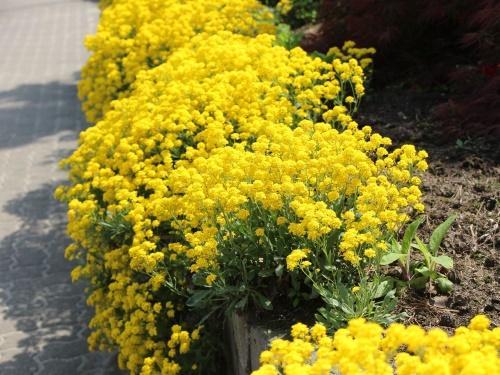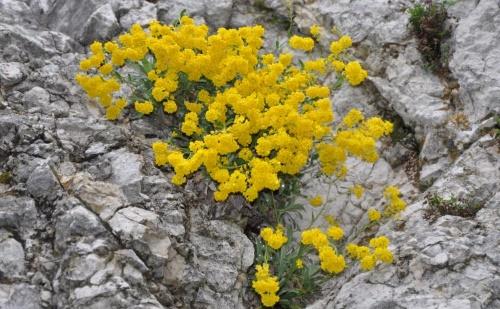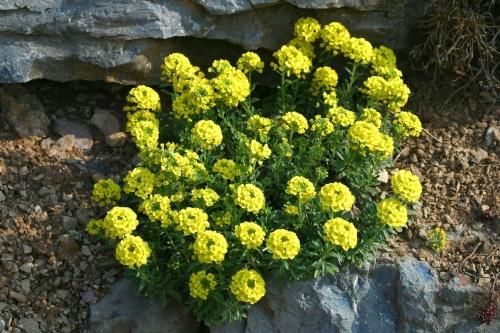Alyssum mountain - unpretentious and persistent ground cover for the garden
 Among ground cover plants, mountain alissum is not the last place. He earned his popularity with his unpretentious and persistent character. In addition, lush bushes will create a whole carpet on the site and will delight you with early and lush flowering. Having planted alissum once in the garden, you can admire its green carpet for many years, decorated with sunspots-flowers in spring.
Among ground cover plants, mountain alissum is not the last place. He earned his popularity with his unpretentious and persistent character. In addition, lush bushes will create a whole carpet on the site and will delight you with early and lush flowering. Having planted alissum once in the garden, you can admire its green carpet for many years, decorated with sunspots-flowers in spring.
Based on the Latin name, this plant variety is also known as alyssum montanum or gmelin.
Alissum mountain - characteristic features of the species

Alyssum blooms at the end of April; in the middle lane, flowering can move to early May. It has racemose inflorescences formed from many small but very bright flowers of a bright yellow color.
This type of ground cover is rightfully considered one of the most long-lived. And it also has high winter hardiness, which allows you to grow the plant almost everywhere.
Growing Mountain Alyssum is a simple planting and not tricky care
 Small seeds of alissum have good germination. You can plant it in several ways:
Small seeds of alissum have good germination. You can plant it in several ways:
- Directly to the flowerbed in late April or late September.
- For seedlings at the end of March. Landing on a flower bed - at the end of May.
The seedling method allows you to bring flowering closer in comparison with alissum sown in open ground in spring.
It is necessary to plant a perennial in a well-lit place, it is possible between stones. The plant prefers dry soil with good drainage. At least 40 cm should be left between the bushes, as they grow strongly.
Plant care is simple and consists of regular watering. With a lack of moisture, the bushes shed their buds and grow poorly. In the spring, it is worth feeding with nitrogen-containing fertilizers so that the alissum quickly builds up the green mass. Before flowering, it is more advisable to add a mineral complex. After the end of flowering, the perennial must be cut: remove the peduncles and shorten the stems. This way you can achieve re-flowering at the end of summer. However, if the winter is cold, pruning should be moved to the spring.